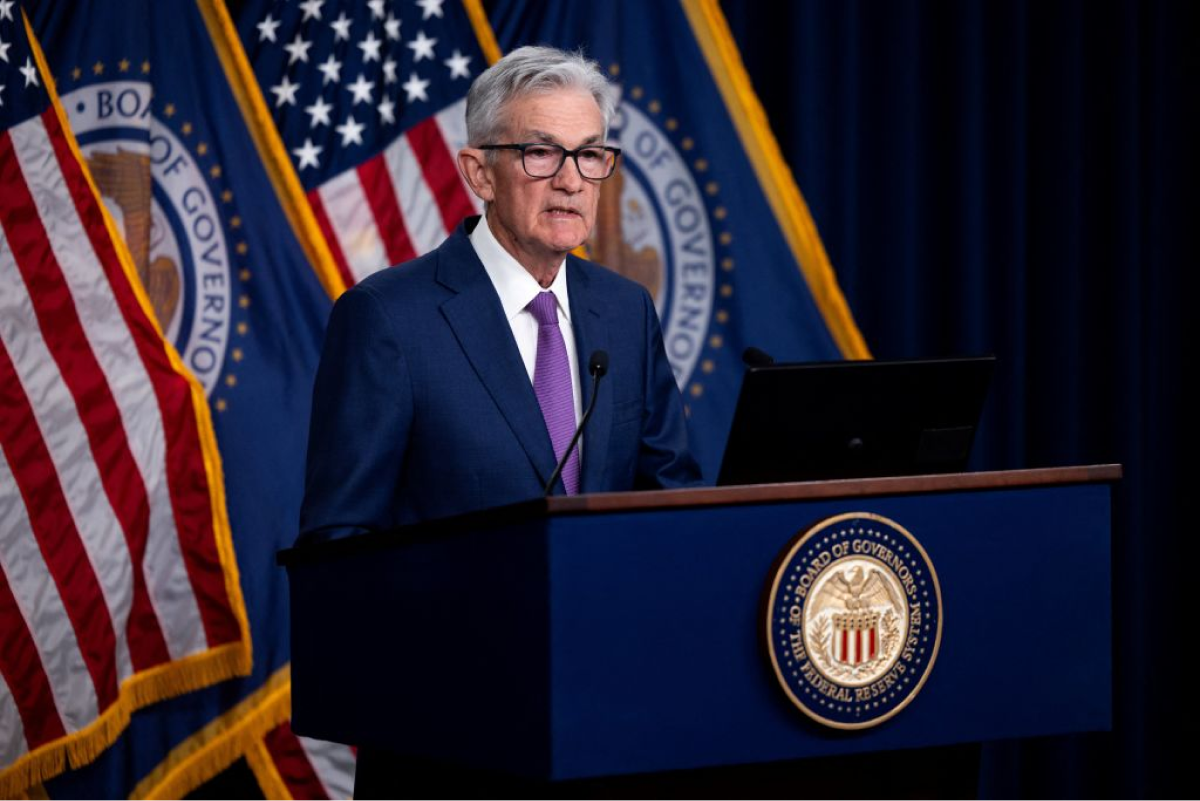The divergence of opinions amongst central banks has given rise to trading opportunities and is likely to continue to do so. Let’s explore their different agendas and the implications for traders.
The US Federal Reserve
Although the Fed’s Dot Plot Projections in December pencilled in three rate cuts in 2024, the Fed started the year by pushing back on the timing of these rate cuts. This unexpected shift doused the market’s enthusiasm for larger and immediate rate cuts and sent the USD surging along with US yields.
Implications
Market rate cut expectations have shifted to May, with a 50% chance of a 25bp rate cut. Despite an expected delay in rate cuts, the continued resilience of the US economy and falling inflation have buoyed equity investors sending all major US indices to record highs in 2024.
Trading Considerations
For trend-following traders, the current USD uptrend against major currencies should continue to present opportunities for long USD/JPY, short AUD/USD and short EUR/USD positions. The Dow30, S&P500 and Nasdaq100 Indices have all printed new record highs further attracting trend followers.
Risks to Consider
Risk to long USD positions could be weaker than expected US economic data which would likely bring forward rate cuts. An end to Middle East tensions would reduce safe-haven demand for the USD which could trigger a reversal in the current USD trend. Conversely stronger US economic data and a bounce back in inflation would suggest that equity indices may be overbought.
The Reserve Bank of Australia
Focused on returning inflation to its 2-3% target, the RBA expects to achieve this by 2025. Recent comments by RBA’s Bullock and Kohler reiterate that inflation remains too high. Softer economic data hasn't swayed the RBA to begin its easing cycle.
Implications
Market consensus expects Australia's cash rate to remain at 4.35% throughout most of 2024, with the first rate cut anticipated in September. The AUD/USD has fallen 4.2% in 2024 due to unfavourable interest rate differentials and softer Chinese economic growth. However, the combination of a cooling economy and falling inflation has helped push the ASX200 to record highs.
Trading Considerations
Interest rate differentials are a key factor weighing on the value of the AUD. The AUD is likely to remain under pressure until the Fed delivers rate cuts, narrowing the interest rate differential. The recent AUD/USD range of 0.6500/0.6900 has broken to the downside attracting sellers on any small bounce.
Risks to Consider
A quick rebound in Chinese economic growth and stimulus measures could support the AUD. Stronger than expected Australian economic data would surprise the RBA and likely see rate cuts delayed to 2025 further supporting the AUD.
Reserve Bank of New Zealand
Determined to fight inflation, the RBNZ was the first among global central banks to hike rates in October 2021. Governor Adrian Orr recently declared inflation "the number one evil." In addition, ANZ Bank’s forecast of two RBNZ rate hikes in February and April surprised the market, leading to a strong NZD rally last week. Implications ANZ Bank in NZ may be alone in predicting two rate hikes over the next few months but consensus amongst market economists and the RBNZ is that inflation remains too high at 4.7%. It remains uncertain if the RBNZ will follow through, but markets are re-pricing the NZD higher against all major currencies.
Trading Considerations
The February 28th RBNZ Meeting presents a key event risk. Short term traders have been buying NZD in anticipation of a rate rise. Upcoming NZ CPI data on April 18th will offer crucial insights into future RBNZ decisions. This means long NZD positions against EUR and AUD may present a potential opportunity, especially if their respective central banks begin to cut rates sooner than the RBNZ. Long NZD/JPY has been attractive due to interest rate differentials alone.
Risks to Consider
If the RBNZ doesn’t deliver a rate rise, then this could trigger a wave of NZD selling. The risk for long NZD/JPY positions is whether the Bank of Japan starts hiking rates and how many rate hikes will be delivered in 2024. If the BoJ adopts an aggressive stance then the JPY could appreciate dramatically against most major currencies.
Bank of Japan
The BoJ’s decade-long experiment with negative interest rates (NIRP) has pushed the JPY to forty-year lows against the USD. Low rates have fuelled a rise in the Nikkei 225 Index to thirty-four year highs. A weaker JPY has helped Japan’s export sector become more competitive and lifted economic growth. However, BOJ Deputy Governor Uchida's recent optimism about the economy and hints at ending NIRP have ignited a question: Is the USD/JPY uptrend finally nearing its peak?
Implications
Uchida's comments fuelled speculation of NIRP removal in March or April, potentially weakening the USD/JPY and capping the Nikkei’s rise. However, market participants remain cautious because they’ve heard it all before and were burnt by selling USD/JPY too early in 2023. USD/JPY has risen above key psychological level of 150 and therefore MoF/BoJ verbal intervention seems likely. While past attempts have had limited success, the threat of intervention combined with rate hikes could potentially see a large sell-off in USD/JPY and trimming of long Nikkei positions. Traders need to be alert to this possibility. Anticipated Fed rate cuts are likely to be delayed and three cuts are already priced in, capping potential upside for US yields and the USD.
Trading Considerations
With interest rate differentials supporting the USD’s recent rise, trend-following traders continue to be attracted to long USD/JPY positions. Long Nikkei225 has been popular among traders following comments that the BoJ is keen to maintain low rates and unlikely to deliver successive rate increases.
Risks to Consider
There needs to be a strong catalyst for abandoning long USDY/JPY and long Nikkei225 trades. USD/JPY is nearing 2023 highs of 152, indicating that upside momentum could stall. BoJ might increase rates more aggressively and increase threats of intervention causing a sudden reversal in the USD/JPY. Aggressive rate rises would likely take the wind out of the Nikkei225 as well. Weaker than expected US economic data may bring forward US rate cuts which would likely see USD/JPY retrace back to early January levels around 141.
 | Written by Carlo Pruscino Carlo Pruscino, a Senior Sales Trader at CMC Markets, brings over 25 years of industry expertise to his role. Carlo specialises in equity indices, forex, and commodities, assisting premium clients with trade execution, analysis and education. Before joining CMC Markets, Pruscino applied his expertise at notable institutions such as Commonwealth Bank and Macquarie, advising Global Hedge Funds, Central Banks, and Australian Corporations on advanced FX and Interest Rate hedging strategies. |
Disclaimer: CMC Markets Singapore may provide or make available research analysis or reports prepared or issued by entities within the CMC Markets group of companies, located and regulated under the laws in a foreign jurisdictions, in accordance with regulation 32C of the Financial Advisers Regulations. Where such information is issued or promulgated to a person who is not an accredited investor, expert investor or institutional investor, CMC Markets Singapore accepts legal responsibility for the contents of the analysis or report, to the extent required by law. Recipients of such information who are resident in Singapore may contact CMC Markets Singapore on 1800 559 6000 for any matters arising from or in connection with the information.








